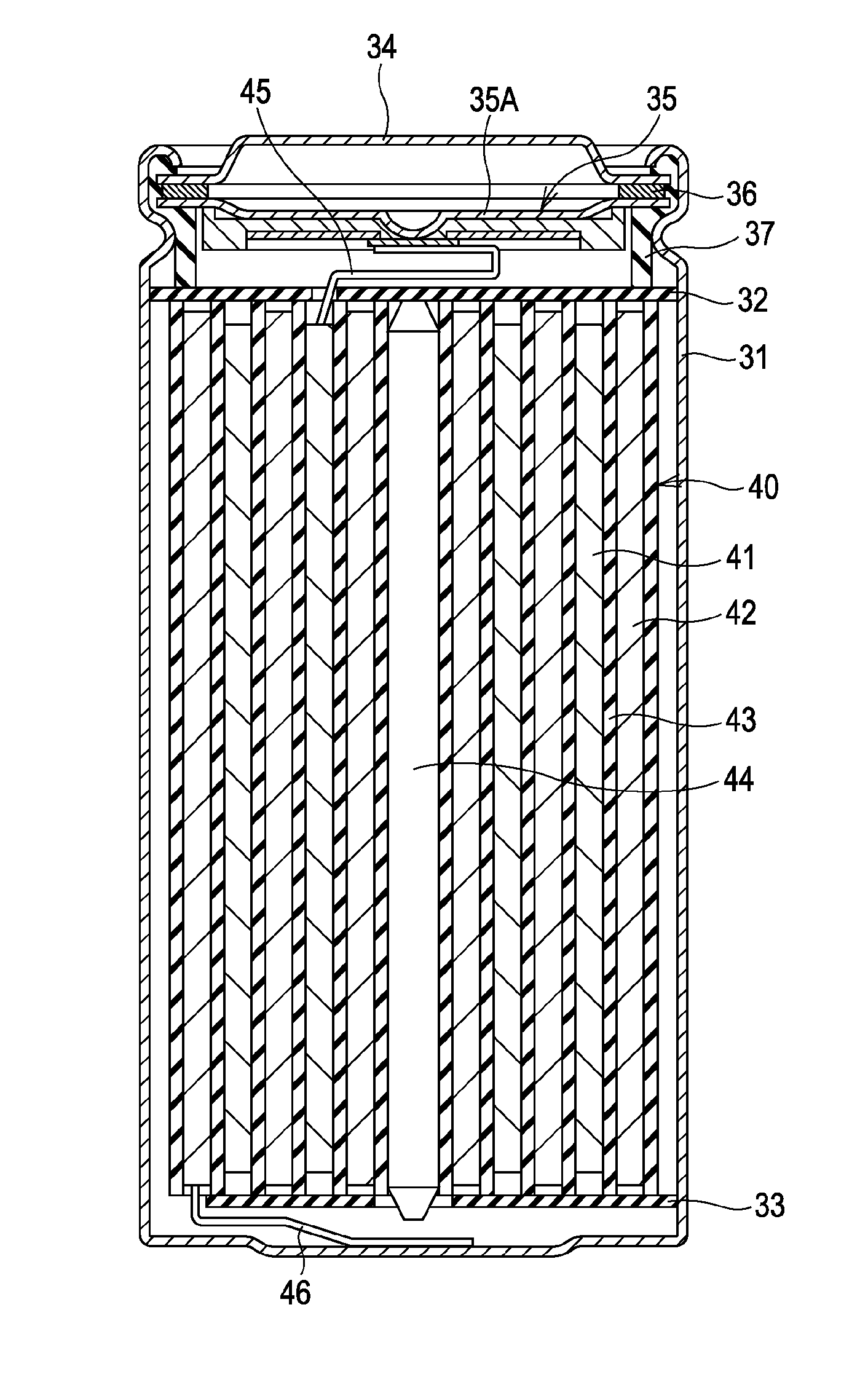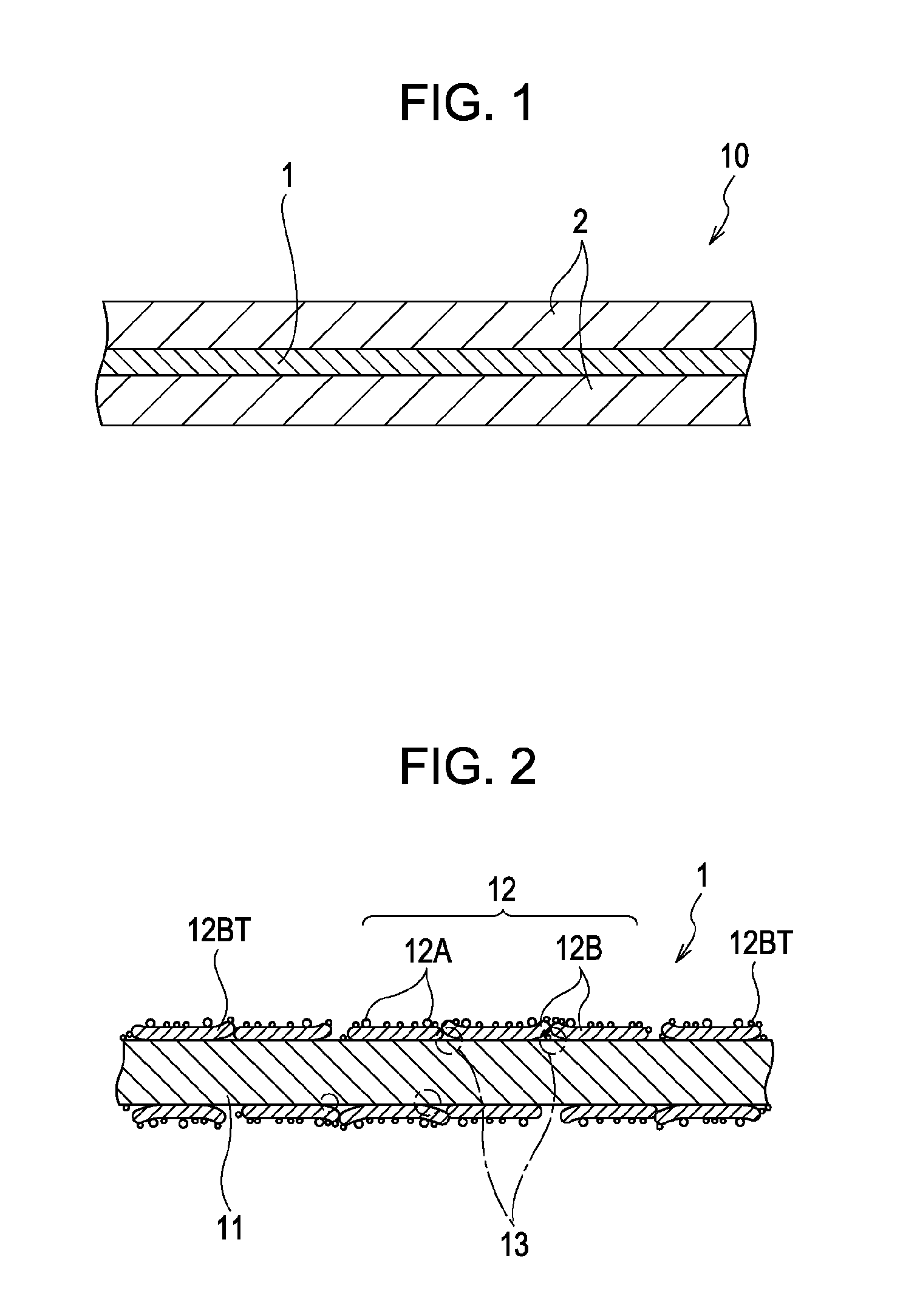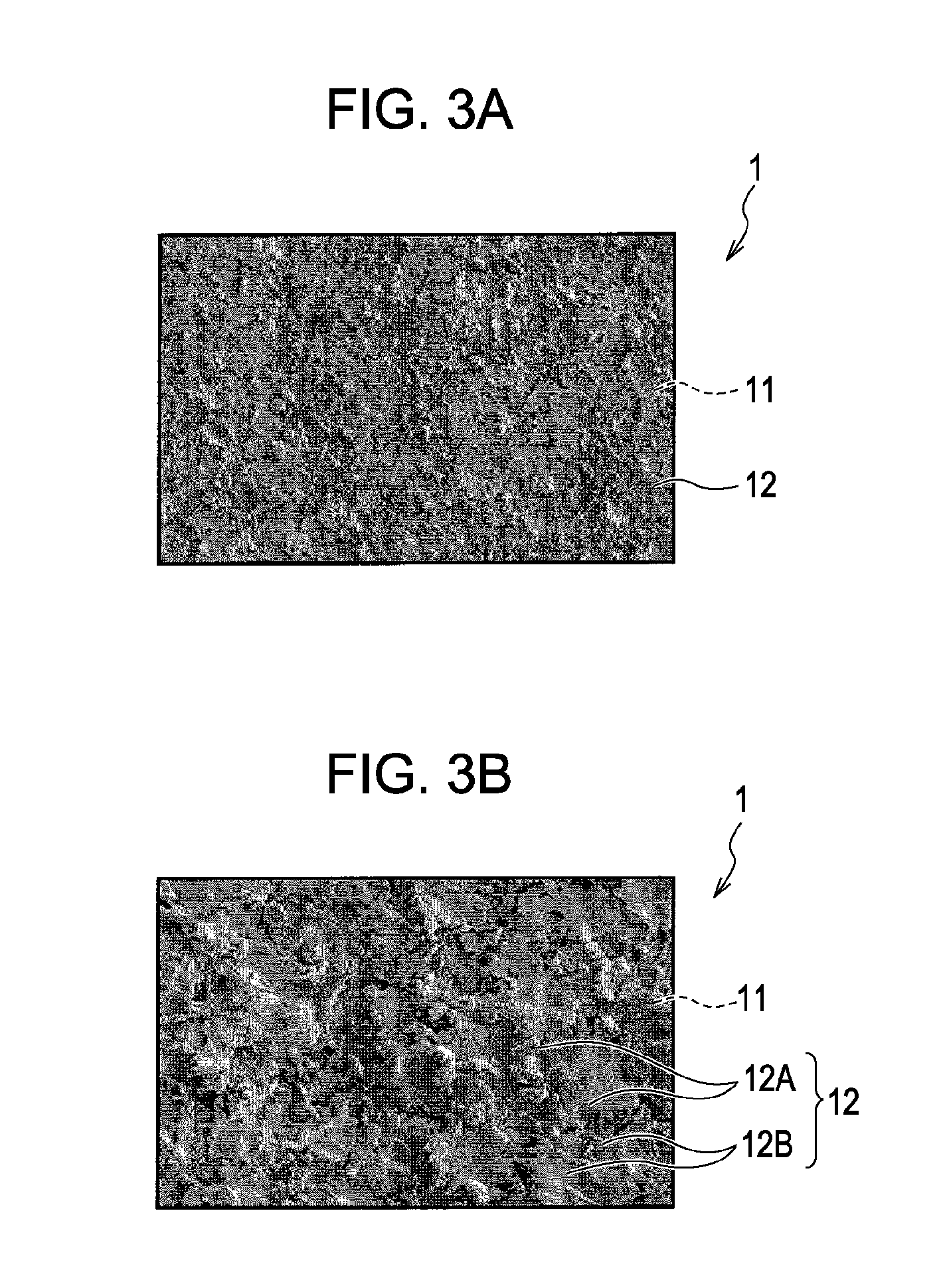Rechargeable battery, anode, and current collector
a current collector and rechargeable battery technology, applied in the manufacture of electrodes, cell components, electrochemical generators, etc., can solve the problems of increasing power consumption and affecting the cycle characteristics of current collectors, and achieve the effects of improving cycle characteristics, increasing anchoring effects, and significantly improving adhesion of active anode material layers to current collectors
- Summary
- Abstract
- Description
- Claims
- Application Information
AI Technical Summary
Benefits of technology
Problems solved by technology
Method used
Image
Examples
examples
[0147]The following specific examples are provided further to illustrate preferred embodiments of the invention.
examples 1-1 and 1-2
[0148]According to the following procedures, a coin-type rechargeable battery shown in FIG. 12 was produced. At this time, the rechargeable battery is devised to be a rechargeable lithium-ion battery which is configured such that the capacity of the anode is represented by the insertion and extraction of lithium ions as the electrode reaction substance.
[0149]In the first place, a cathode 71 was formed. More specifically, lithium carbonate (Li2CO3) and cobalt carbonate (CoCO3) were mixed at a molar ratio of 0.5:1, and this mixture was fired in air at 900° C. for 5 hours, whereby lithium cobalt complex oxide (LiCoO2) was formed. Thereafter, 96 parts by weight of lithium cobalt complex oxide (median size=5 μm) as an active cathode material, 1 part by weight of carbon black as a cathode conductive agent, and 3 parts by weight of polyvinylidene fluoride as a cathode binding agent were mixed to form a cathode mixture. Subsequently, the cathode mixture was dispersed into N-methyl-2-pyrroli...
examples 1-3 and 1-4
[0153]As shown in Table 1, the process steps proceeded in a manner similar to those described in the examples 1-1 and 1-2, with the exception that an electrolytic copper foil or rolled copper foil was used as-is for forming the anode current collector.
[0154]When the cycle characteristics were investigated for the rechargeable batteries of the examples 1-1 through 1-4, several results were obtained as shown in Table 1.
[0155]In the present investigation of the cycle characteristics, the cycle tests were carried out and discharge capacity retention ratios were obtained. Namely, after completing the first charge-discharge cycle in an atmosphere at 23° C. in order to stabilize the battery condition, another charge-discharge cycle was repeated and the discharge capacity value during the second cycle was measured. Subsequently, after completing 99 charge-discharge cycles in the same atmosphere, the discharge capacity value during the 101-th cycle was measured. Thereafter, the discharge cap...
PUM
| Property | Measurement | Unit |
|---|---|---|
| tensile strength | aaaaa | aaaaa |
| diameter | aaaaa | aaaaa |
| mean particle size | aaaaa | aaaaa |
Abstract
Description
Claims
Application Information
 Login to View More
Login to View More - R&D
- Intellectual Property
- Life Sciences
- Materials
- Tech Scout
- Unparalleled Data Quality
- Higher Quality Content
- 60% Fewer Hallucinations
Browse by: Latest US Patents, China's latest patents, Technical Efficacy Thesaurus, Application Domain, Technology Topic, Popular Technical Reports.
© 2025 PatSnap. All rights reserved.Legal|Privacy policy|Modern Slavery Act Transparency Statement|Sitemap|About US| Contact US: help@patsnap.com



